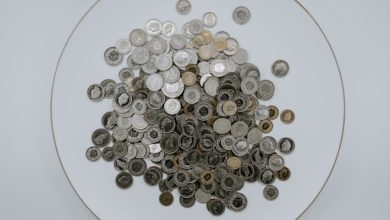Leveraging Technical Analysis for Crypto Success

- Understanding the basics of technical analysis
- Key indicators to watch in cryptocurrency trading
- Applying technical analysis to predict price movements
- Utilizing chart patterns for informed decision-making
- Common mistakes to avoid when using technical analysis in crypto
- Strategies for leveraging technical analysis for successful trading
Understanding the basics of technical analysis
Technical analysis is a crucial tool for successfully trading cryptocurrencies. By analyzing historical price data and volume, traders can gain insights into potential future price movements. Understanding the basics of technical analysis is essential for making informed trading decisions.
One of the fundamental concepts in technical analysis is support and resistance levels. Support levels are price points where a cryptocurrency has historically had difficulty falling below, while resistance levels are price points where it has struggled to rise above. By identifying these levels, traders can make more accurate predictions about future price movements.
Another key aspect of technical analysis is chart patterns. Chart patterns, such as head and shoulders, triangles, and flags, can provide valuable information about potential trend reversals or continuations. Recognizing these patterns can help traders anticipate market movements and adjust their strategies accordingly.
Indicators are also essential tools in technical analysis. Popular indicators include moving averages, relative strength index (RSI), and stochastic oscillators. These indicators can help traders confirm trends, identify overbought or oversold conditions, and generate buy or sell signals.
Overall, a solid understanding of technical analysis can give traders a competitive edge in the volatile cryptocurrency market. By analyzing historical data, identifying support and resistance levels, recognizing chart patterns, and using indicators effectively, traders can make more informed decisions and increase their chances of success.
Key indicators to watch in cryptocurrency trading
When it comes to cryptocurrency trading, there are several key indicators that traders should keep an eye on to make informed decisions. By leveraging technical analysis, traders can analyze historical price data and market trends to predict future price movements. Here are some key indicators to watch in cryptocurrency trading:
- 1. Moving Averages: Moving averages help traders identify trends by smoothing out price fluctuations over a specific period of time. The most commonly used moving averages are the simple moving average (SMA) and the exponential moving average (EMA).
- 2. Relative Strength Index (RSI): The RSI is a momentum oscillator that measures the speed and change of price movements. It helps traders determine whether a cryptocurrency is overbought or oversold, indicating potential trend reversals.
- 3. Volume: Trading volume is a crucial indicator that shows the level of market activity for a particular cryptocurrency. High volume often indicates strong interest from traders and can confirm the validity of a price trend.
- 4. Support and Resistance Levels: Support levels indicate where the price tends to stop falling and bounce back, while resistance levels show where the price tends to stop rising and pull back. These levels help traders identify potential entry and exit points.
- 5. Fibonacci Retracement: Fibonacci retracement levels are horizontal lines that indicate potential support and resistance levels based on the Fibonacci sequence. Traders use these levels to identify key price levels where a cryptocurrency may reverse its trend.
Applying technical analysis to predict price movements
When it comes to predicting price movements in the cryptocurrency market, technical analysis is a valuable tool that traders can leverage to make informed decisions. By analyzing historical price data and market trends, traders can identify patterns and trends that may indicate future price movements. Here are some key techniques for applying technical analysis to predict price movements:
- Trend analysis: One of the fundamental principles of technical analysis is trend analysis. By identifying and analyzing trends in price movements, traders can gain insight into the direction in which the price of a cryptocurrency may be headed. Trends can be upward (bullish), downward (bearish), or sideways (neutral).
- Support and resistance levels: Support and resistance levels are price points at which a cryptocurrency’s price tends to stop and reverse direction. By identifying these levels, traders can anticipate potential price movements and set appropriate entry and exit points for their trades.
- Technical indicators: Technical indicators are mathematical calculations based on price, volume, or open interest data. These indicators can help traders identify market trends, momentum, volatility, and other key factors that may influence price movements. Some popular technical indicators include moving averages, relative strength index (RSI), and Bollinger Bands.
- Chart patterns: Chart patterns, such as head and shoulders, double tops, and triangles, can provide valuable insights into potential price movements. By recognizing and interpreting these patterns, traders can make more accurate predictions about future price movements.
By incorporating these techniques into their trading strategies, traders can improve their ability to predict price movements in the cryptocurrency market. However, it’s important to note that technical analysis is not foolproof and should be used in conjunction with other forms of analysis, such as fundamental analysis and market sentiment, to make well-informed trading decisions.
Utilizing chart patterns for informed decision-making
Utilizing chart patterns can be a valuable tool for making informed decisions when trading cryptocurrencies. By analyzing patterns such as triangles, flags, and head and shoulders formations, traders can gain insights into potential price movements. These patterns can help traders identify key levels of support and resistance, as well as potential entry and exit points for trades.
One popular chart pattern used in technical analysis is the symmetrical triangle. This pattern typically forms during a period of consolidation, where the price moves within converging trendlines. Traders often look for a breakout from the triangle to confirm a new trend direction. Similarly, flags are another common pattern that can signal a continuation of the current trend after a brief pause in price movement.
Head and shoulders patterns are also widely watched by traders as they can indicate a potential trend reversal. This pattern consists of a peak (head) flanked by two lower peaks (shoulders) and is typically followed by a break below the neckline. Traders often use this pattern to anticipate a downward price movement.
Overall, utilizing chart patterns can provide traders with valuable insights into market dynamics and help them make more informed decisions. By incorporating technical analysis into their trading strategy, traders can increase their chances of success in the volatile world of cryptocurrencies.
Common mistakes to avoid when using technical analysis in crypto
When using technical analysis in crypto trading, it is important to be aware of common mistakes that can hinder your success. By avoiding these pitfalls, you can make more informed decisions and improve your trading outcomes.
- One common mistake to avoid is overreliance on indicators. While indicators can be helpful tools for analyzing price movements, relying too heavily on them can lead to false signals and misinterpretations.
- Another mistake is ignoring fundamental analysis. While technical analysis can provide valuable insights into market trends, it is important to also consider fundamental factors that can impact crypto prices.
- It is also important to avoid chasing losses or trying to time the market. Emotional trading can lead to impulsive decisions that are not based on sound analysis.
- Additionally, failing to set stop-loss orders can expose you to unnecessary risks. By setting stop-loss orders, you can limit losses and protect your investment capital.
- Lastly, it is important to stay informed and continuously educate yourself about technical analysis and crypto markets. Continuous learning can help you improve your skills and make better trading decisions.
Strategies for leveraging technical analysis for successful trading
Utilizing technical analysis is crucial for achieving success in crypto trading. By analyzing historical price data and market trends, traders can make informed decisions to maximize profits. Here are some strategies for leveraging technical analysis:
-
Identify key support and resistance levels: By pinpointing levels at which the price of a cryptocurrency is likely to stop and reverse, traders can set entry and exit points for their trades.
-
Use technical indicators: Indicators such as moving averages, RSI, and MACD can provide valuable insights into market sentiment and potential price movements.
-
Apply chart patterns: Recognizing patterns such as triangles, head and shoulders, and double tops can help traders predict future price movements and make profitable trades.
-
Implement risk management strategies: Setting stop-loss orders and managing position sizes based on risk tolerance can help traders protect their capital and minimize losses.
-
Combine technical analysis with fundamental analysis: While technical analysis focuses on price movements, fundamental analysis considers factors such as project developments and regulatory news. By combining both approaches, traders can make more informed decisions.
Overall, mastering technical analysis is essential for navigating the volatile crypto market successfully. By following these strategies and continuously honing your skills, you can increase your chances of achieving long-term profitability in crypto trading.



